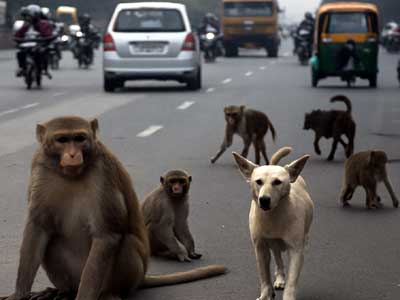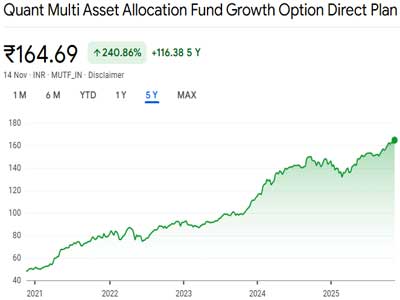From small towns like Shamshabad to a village in Mathura district, the newly opened schools are all Convent-type English medium schools. The government schools called Chungi Ka school or Basic school are meant for the humble class, the Hindi medium walas.
Agra City has seen phenomenal growth in these private English medium schools. People can not recall when the last private, classy Hindi medium school was opened in Agra.
Read in Hindi: शिक्षा में गैर-बराबरी को खत्म करने में विफल रही है मोदी सरकार
Social commentator Prof Paras Nath Choudhary says “Local languages are for the masses, the working classes, while English is the language of the status-hungry aspirational class. Those who want to write poetry and conduct Sahitya Sewa should study local languages. Still, if you aim to fly away to greener pastures and aspire for some status in society, then English is the language for you.” The corporatisation of education has only accelerated this trend.
It sounds shocking but this is true. The educational landscape in India today starkly reflects a burgeoning crisis - a crisis that continues to perpetuate and exacerbate the systemic inequalities rooted in the fabric of our society. Division along class lines has never been more pronounced, as the continued existence of apartheid-like conditions in education strips the majority of children of their rightful opportunities.
Despite the announcement of the New Educational Policy by the Modi government five years ago, no effort has been made to bring down class and community barriers to provide a level playing field for all children. You have a dozen fancy examination boards, thousands of exclusive schools, and a range of experimental teaching systems, but there is neither uniformity nor unity of vision. The expansion of elite, English-medium schools and corporate-run educational institutions has proliferated like mushrooms following rain, particularly in smaller towns in the hinterland, while government-run schools languish in neglect and disrepair.
Retired school teacher Meera says, “The last few decades have witnessed a veritable explosion of convent-style, English medium schools catering predominantly to the affluent. These institutions promise a semblance of quality education, primarily accessible to those with substantial financial means. In stark contrast, government schools meant to serve the underprivileged majority, remain underfunded, overcrowded, and often bereft of adequate teaching staff or basic infrastructure. This stark dichotomy creates an educational apartheid that ensures that the privileged continue to separate themselves from the masses, fortifying a cycle of class divide and social stratification.”
The annual tuition fees in private elite schools in metropolitan areas often reach several lakhs of rupees, effectively barring access to quality education for the countless children whose families struggle to make ends meet. These institutions boast plush amenities such as high-tech laboratories, sprawling campuses, and extracurricular activities that are mere pipe dreams for students in government schools, who often lack basic resources like textbooks or proper classrooms.
Earlier, we had only the Missionary run schools but now the private sector has entered this lucrative industry in a big way. They make money from transport, food, stationery, uniforms, study trips. “What is particularly galling is the relentless advertising and propaganda these private schools employ, portraying an image of superiority, as though they hold a monopoly on the right to a ‘better’ education, says Mysore-based social activist Mukta Gupta.
This commodification of education serves only to widen the chasm between the rich and the poor, reducing the age-old institution of learning to a mere business opportunity, devoid of ethical considerations or social responsibility, adds social scientist TP Srivastava. The impact of these developments extends beyond mere academic performance; it affects the very core of social cohesion. When children from affluent backgrounds are groomed in isolation, shielded from the realities faced by the majority of their peers, it fosters a sense of entitlement and an inability to empathize with the struggles of others. This creates a fragmented society - one where social mobility is stifled, and avenues for diverse, inclusive growth are severely limited, explains academic Tapan Joshi of Pune.
Organisations like PAPA in Agra have been continuously protesting the high-handedness and arbitrariness of the school management of these so-called English medium schools. With rising tuition fees and the relentless demand for money, the idea of equality, parity, or even a level playing field for children crumbles under the weight of financial disparity.
Senior journalist Ajay Jha says, “The stark reality is that in today’s India, the currency of education operates solely on wealth. This reinforces a belief that merit and potential are subservient to socioeconomic standing, perpetuating a cycle that ensures privilege begets privilege, while poverty condemns its victims to cycles of disenfranchisement.”
Indeed, the current state of education in India is one of profound inequality and elitism, pitting the privileged against the powerless. As long as we allow such a system to persist - where the rich can afford their child’s access to quality education, while the poor are left to fend for themselves in dilapidated schools - this education apartheid will fester, undermining the very tenets of democracy and equality. It is high time we confront these injustices head-on and advocate for an educational paradigm that prioritizes equity over profit, ensuring that every child - regardless of their background - has access to the quality education they deserve.


















Related Items
Co-education blues, chatting charades and the great panic attacks
Will the BJP look for Modi’s successor?
Air Travel: Deadly Negligence and Government Deceptions!